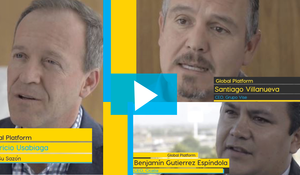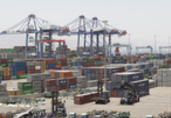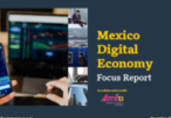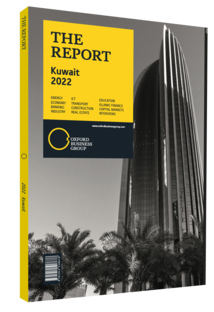What would I highlight? Particularly the products fortunately are [already] and will be there.
We are talking about the wealth, variety and quality of the mining sector, the hydrocarbons sector, the agricultural sector, the fishing sector, and that is a source that is going to be there; we should make the most of it.
What happened to the policies, which are the second element? A great effort has been made in recent months. And in particular, there are 21 treaties or trade agreements with countries. This is an obvious way of showing that there has also been support and reinforcement in this regard.
And the third would be logistics operators.
The year 2017 also marks a milestone in cargo and exports. All private and public ports in Peru have reached 100m tonnes, which is 10% more than in 2016.
We have done something well, evidentially. And this involves not only the efforts of logistics operators, but also the efforts of importers and exporters.
Jorge Arangurí: Let's remember that in 1994, Peru exported $100m.
All of Peru, all of the agro-industry sector, exported $5bn by the end of 2017, so how has it all happened?
We had to import technology, that is, we had to adopt technology and adapt it. We have drawn up phytosanitary protocols that have increased the competitiveness of our agriculture and industry even further. We have been able to quickly adapt new crops and so, for example, Peru is the world’s largest exporter of asparagus and artichoke and the world’s third-largest exporter of blueberries.
I mean, they're records really. Within this dynamic, on the domestic side, we have developed very appealing policies for exporters, for example: We have a “Drawback” policy, which is nothing more than a refund of the import duties paid on the supplies we use to produce these exported products.
At the same time we have an agrarian law that allows us to be competitive and to remain competitive in terms of labour costs. We have zero duty on machinery imports that is relevant both for the work in the fields and also for industry.
Alberto Ñecco: In 2018 we have a portfolio of $4.8bn, in about 18 projects and for the period 2019-2020, we expect to exceed $5bn in investment.
And this portfolio is designed or distributed in what we call the social portfolio.
That basically is education through public-private partnerships for the construction of schools or educational centres, health in hospitals for both the Ministry of Health and the Armed Forces network, and in Justice where we are going to implement and promote participation through the construction of prisons or equivalent facilities. Regarding traditional infrastructure, we continue to actively participate in transportation schemes where we have road and motorway projects as well as port projects.
Francis Stenning: Foreign investment has been important for the growth we have experienced.
Peru has stood out in the last decade for its substantial growth rates [and] investment relative to its GDP. If we count them, they have fluctuated between 20% and 25%, well above what our peers are investing in the Armenian region, and I think that even on a global scale is a rather significant figure.
That is something that needs to be emphasised.
A large part of that is local private investment, and that, too, must be highlighted. 70% or 80% of this investment is local, but also 10% to 15% of this investment has been foreign. They have accompanied us, it has been very relevant particularly for the specialisations they have, for the timeframe they have committed, for the conditions they have brought us.
We will continue to look for other partners abroad to accompany us in the development of our country. We have done things well over the past 15 years and we must continue to do them this way in the future if we are to make further progress. We therefore believe that it is paramount for the development of the country.







